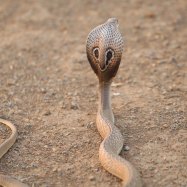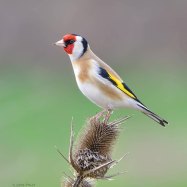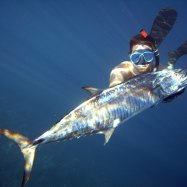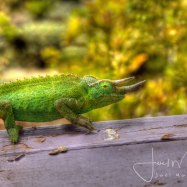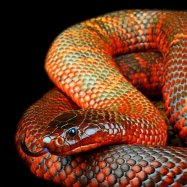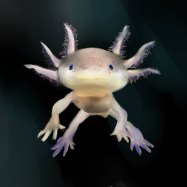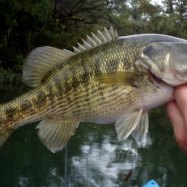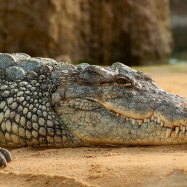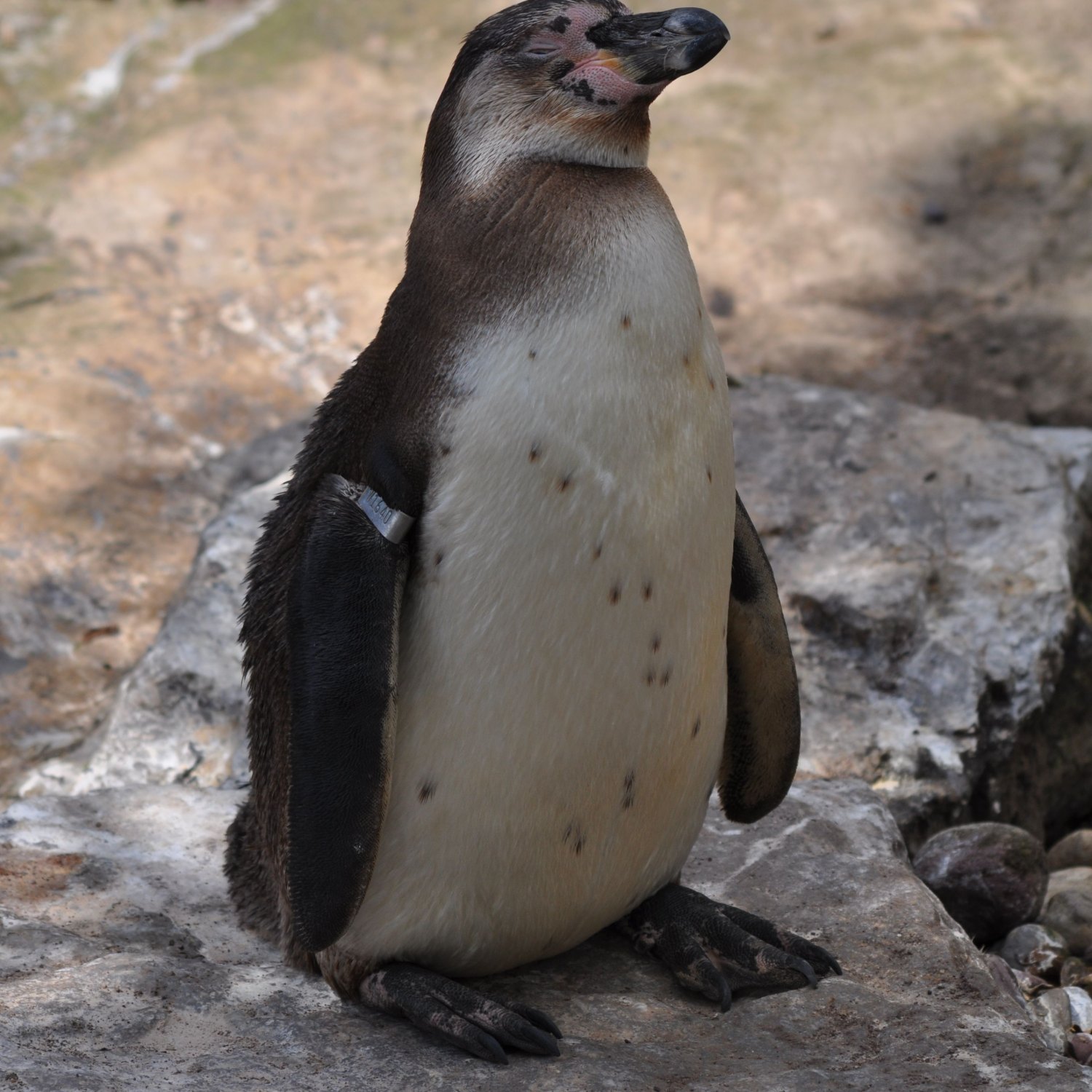
Humboldt Penguin
56-70 cm
The Humboldt Penguin, found in the coastal regions of Chile and Peru, is a slender and streamlined bird that belongs to the Spheniscidae family. With a length of 56-70 cm, these penguins are known for their unique black and white markings and their ability to swim up to 20 miles per hour. Visit the stunning beaches of Chile and Peru to catch a glimpse of these fascinating creatures in their natural habitat. #HumboldtPenguin #AnimalsH #CoastalBirds
Animal Details Summary:
Common Name: Humboldt Penguin
Kingdom: Animalia
Habitat: Coastlines, rocky shores, islands
Spheniscus humboldti: Exploring the Enchanting Habits of the Humboldt Penguin
The Pacific coast of South America is home to a charming and charismatic creature known as the Humboldt Penguin. Its scientific name, Spheniscus humboldti, may be a bit of a mouthful to pronounce, but this flightless bird's intriguing behavior and remarkable features more than make up for it.The Humboldt Penguin belongs to the Spheniscidae family, which also includes other penguin species such as the African Penguin and the Galapagos Penguin. However, this particular species is unique in its own way, and there's a lot we can learn and appreciate about it Humboldt Penguin. So, let's take an exciting journey into the world of the Humboldt Penguin and discover all that this little bird has to offer.
The Habitat of the Humboldt Penguin
The Humboldt Penguin is native to the coastal regions of Chile and Peru, where it can be found inhabiting coastlines, rocky shores, and islands. These areas provide the perfect habitat for the penguin, as they offer protection from predators and an abundant supply of food.One of the most notable habitats of the Humboldt Penguin is the coastal area of Punta San Juan in Peru. This region is home to a massive colony of over 4,000 breeding pairs of Humboldt Penguins, making it one of the largest penguin colonies in the world. The penguins have also been found in smaller numbers in other coastal regions of Peru and Chile, such as Islas Ballestas and Isla Chanaral.
The Geographical Distribution of the Humboldt Penguin
As mentioned earlier, the Humboldt Penguin is found along the Pacific Ocean off the coast of South America. More specifically, it is found in the cold and nutrient-rich waters of the Humboldt Current, after which it is named.This current runs along the western coast of South America, bringing cool waters from the Antarctic and creating a perfect environment for the penguins to thrive Habu Snake. Other species that benefit from this current include marine mammals, seabirds, and various fish species, making it an essential part of the ecosystem.
The Physical Characteristics of the Humboldt Penguin
At first glance, the Humboldt Penguin may not seem very different from other penguin species. It has a classic penguin body shape, with short wings used for swimming and a streamlined body designed for efficient movement in the water. It also has a black back, a white front, and a distinctive black stripe spanning across its chest.However, upon closer inspection, one can appreciate the unique features of the Humboldt penguin. One striking characteristic is the pink patches around its eyes, which make it look like it's wearing a pair of glasses. These patches are often brighter in male penguins and serve as a way for them to attract females.
Another interesting feature is the penguin's flipper-like wings, which are adapted for swimming and help the penguin maneuver through the water effortlessly. Over time, these wings have evolved into flippers, giving the penguin its iconic waddling gait on land.
The Feeding Methods of the Humboldt Penguin
Humboldt Penguins are carnivorous, and their diet mainly consists of small fish such as anchovies, sardines, and small crustaceans. They are excellent hunters and use their streamlined bodies to swim quickly and chase after their prey.One fascinating fact is that Humboldt Penguins don't have specific territories for hunting and instead forage in groups known as "rafts." These rafts can consist of hundreds of penguins, and they work together to herd fish and increase their chances of catching a meal. It's a remarkable example of collaboration and cooperation among these birds.
The Social Behavior of the Humboldt Penguin
The Humboldt Penguin is a highly social animal, and their colonies can consist of hundreds or even thousands of individuals. They form strong bonds with their mates and often stay with the same partner for multiple breeding seasons.During breeding season, which typically occurs between April and August, the male penguins will court the female with displays and vocalizations. Once a pair has bonded, they will work together to build a nest made of stones and feathers to protect their eggs.
The penguins also have an interesting breeding strategy known as "egg swallowing." This occurs when the female penguin loses her prior egg and the male penguin brings her a new egg to adopt. The female will then swallow the egg, and it hatches within her body. She will eventually lay the chick, and the parents will care for it until it is ready to leave the nest.
The Conservation Status of the Humboldt Penguin
Unfortunately, the Humboldt Penguin is classified as "vulnerable" on the IUCN Red List, which means it is at risk of becoming endangered. One of the main threats facing this species is overfishing, which depletes their food sources and limits their ability to feed and raise their chicks.Other threats include oil spills, climate change, and disturbance from human activities such as tourism and infrastructure development. These activities can disrupt the penguins' natural behavior and cause them to abandon their nesting sites, making it challenging for them to breed successfully.
However, various conservation efforts are in place to protect and preserve the Humboldt Penguin. For example, the Chilean government has designated certain coastal areas as protected wildlife reserves to limit human disturbance. Other efforts include monitoring and research projects, captive breeding and rehabilitation programs, and promoting sustainable fishing practices.
Why We Should Appreciate the Humboldt Penguin
The Humboldt Penguin is not only an essential part of the ecosystem but also an enchanting and charming creature that deserves to be appreciated and protected. Beyond its attractive appearance, the penguin also has unique behaviors and adaptations that are worth studying and learning from.Its ability to form strong social bonds and work together in groups is a lesson in cooperation and teamwork. Additionally, its adaptation to the cold and harsh environment of the Humboldt Current is a testament to its resilience and survival skills.
Furthermore, the Humboldt Penguin serves as an indicator species, meaning its health and population can reflect the overall health of the marine ecosystem. By protecting and preserving this species, we are also ensuring the health of the ocean and all the creatures that call it home.
In conclusion, the Humboldt Penguin may be a small bird, but its impact and importance cannot be overlooked. From its fascinating behavior and remarkable adaptations to its crucial role in the ecosystem, the Humboldt Penguin is a truly captivating and enchanting creature that deserves our admiration and protection. Let's continue to learn about and appreciate this charming bird, and together, we can ensure a bright future for the Humboldt Penguin and its habitat.

Humboldt Penguin
Animal Details Humboldt Penguin - Scientific Name: Spheniscus humboldti
- Category: Animals H
- Scientific Name: Spheniscus humboldti
- Common Name: Humboldt Penguin
- Kingdom: Animalia
- Phylum: Chordata
- Class: Aves
- Order: Sphenisciformes
- Family: Spheniscidae
- Habitat: Coastlines, rocky shores, islands
- Feeding Method: Carnivorous
- Geographical Distribution: Pacific Ocean off the coast of South America
- Country of Origin: Chile and Peru
- Location: Coastal regions of Chile and Peru
- Animal Coloration: Black back, white front, and a distinctive black stripe across the chest
- Body Shape: Slender and streamlined
- Length: 56-70 cm
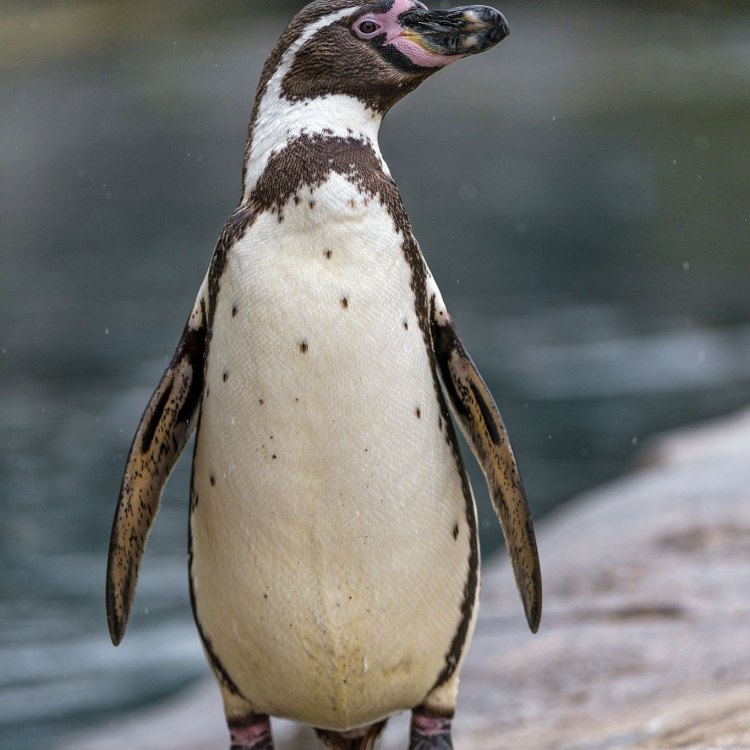
Humboldt Penguin
- Adult Size: 56-70 cm
- Average Lifespan: 15-20 years
- Reproduction: Monogamous
- Reproductive Behavior: Lays two eggs, parents take turns incubating the eggs
- Sound or Call: Braying call similar to a donkey
- Migration Pattern: Migrate in search of food
- Social Groups: Colonial
- Behavior: Highly social and vocal
- Threats: Overfishing, climate change, pollution, habitat destruction
- Conservation Status: Vulnerable
- Impact on Ecosystem: Key predator in the marine food chain
- Human Use: Tourism, scientific research
- Distinctive Features: Distinct black and white coloration, long flipper-like wings
- Interesting Facts: Named after the Humboldt Current, which brings cold, nutrient-rich water to their habitat
- Predator: Sea lions, leopard seals, sharks
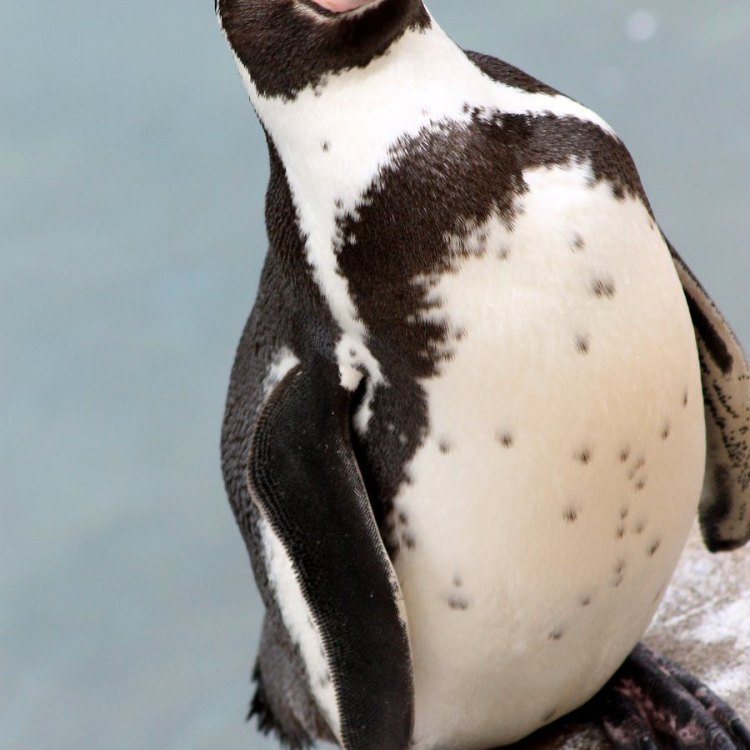
Spheniscus humboldti
The Fascinating World of the Humboldt Penguin
Deep in the cold, crystal-clear waters of the Pacific Ocean, a unique species of penguin thrives. The Humboldt Penguin, also known as the Peruvian Penguin, is native to the coasts of Peru and Chile, where it can be found waddling along the rocky shores or swimming with grace and agility in the frigid waters.With its distinct black and white coloration and long flipper-like wings, the Humboldt Penguin stands out among its penguin cousins. But there is so much more to discover and appreciate about this fascinating creature beyond its physical appearance PeaceOfAnimals.Com.
Adult Size and Average Lifespan
The Humboldt Penguin is a medium-sized penguin, reaching an average height of 56-70 cm. Its small stature makes it an adorable and popular attraction at zoos and aquariums around the world.
In the wild, Humboldt Penguins can live up to 15-20 years, but in captivity, they have been known to live up to 30 years. This relatively long lifespan is a testament to the resilience and adaptability of this species.
Reproductive Behavior and Monogamy
Unlike other penguin species that mate with multiple partners, the Humboldt Penguin is monogamous. Mated pairs stay together for life, and they work together to raise their offspring.
During the breeding season, which runs from early March to early April, the penguins form colonies along the rocky shores. The males will excavate burrows in the sand or under rocks, where the females will lay two eggs.
Parenting Duties and Vocalization
After laying their eggs, the parents take turns incubating them for about 40 days Herrerasaurus. They use their brood patches, featherless patches on their bellies, to keep the eggs warm. This shared parenting behavior is essential for the survival of the species, as it allows both parents to forage for food without leaving the eggs unattended.
Interestingly, Humboldt Penguins are highly social and vocal creatures. Their braying call, similar to that of a donkey, can be heard throughout their colonies. These vocalizations serve as a way for them to communicate with their mates and offspring.
Migration Pattern and Social Groups
The Humboldt Penguins are migratory creatures, traveling in search of food. They will move up and down the coastline, following the movements of their prey, mainly anchovies and sardines. Their migration patterns also help them avoid changing water temperatures caused by the Humboldt Current.
In the wild, they live in large colonies, sometimes consisting of thousands of individuals. Within these colonies, they form smaller social groups, which allow them to establish hierarchies and mate with their chosen partner.
Threats and Conservation Status
Unfortunately, like many other animal species, the Humboldt Penguin is facing multiple threats that put its survival at risk. Overfishing, climate change, pollution, and habitat destruction are the primary forces behind the decline of their population.
As a result, the Humboldt Penguin is classified as Vulnerable on the IUCN Red List of Threatened Species. This conservation status, coupled with the relentless efforts of conservation organizations, highlights the urgent need to protect and preserve these magnificent creatures.
Impact on the Ecosystem and Human Use
The Humboldt Penguin plays a significant role in the marine food chain as a key predator. They help control the population of their prey, ensuring a healthy and balanced ecosystem. This makes them vital to the sustainability of their habitat and the surrounding marine life.
But humans also play a role in their ecosystem. The Humboldt Current, which brings cold, nutrient-rich water to their habitat, is named after Alexander von Humboldt, a German naturalist and explorer who contributed significantly to the study of the Pacific Ocean's marine life. Today, the Humboldt Penguin supports various human activities, including tourism and scientific research.
Distinctive Features and Interesting Facts
One look at the Humboldt Penguin, and you will notice its striking black and white coloration, with a black band running across its chest. This unique color pattern serves as camouflage, making it difficult for predators to spot them in the water.
Named after the Humboldt Current, this penguin's home is also home to many other marine creatures, including its predators. Sea lions, leopard seals, and sharks are among the main predators of the Humboldt Penguin. These predators pose a significant threat to their survival, making hunting and survival skills essential for their young.
Despite their challenges, the Humboldt Penguin has adapted and evolved to thrive in its harsh habitat. But they can't do it alone. It's up to us to create awareness, support conservation efforts, and protect this incredible species for generations to come.
In Conclusion
The Humboldt Penguin may not be the tallest or the fastest, but it is undoubtedly one of the most fascinating creatures of the ocean. With its monogamous relationships, shared parenting duties, and highly social behavior, this penguin has captured the hearts and minds of many around the world.
But their survival is constantly threatened, and it's up to us to take action. By learning more about this remarkable species and supporting conservation efforts, we can help ensure the Humboldt Penguin's continued existence and preserve the beauty of our planet's oceans.
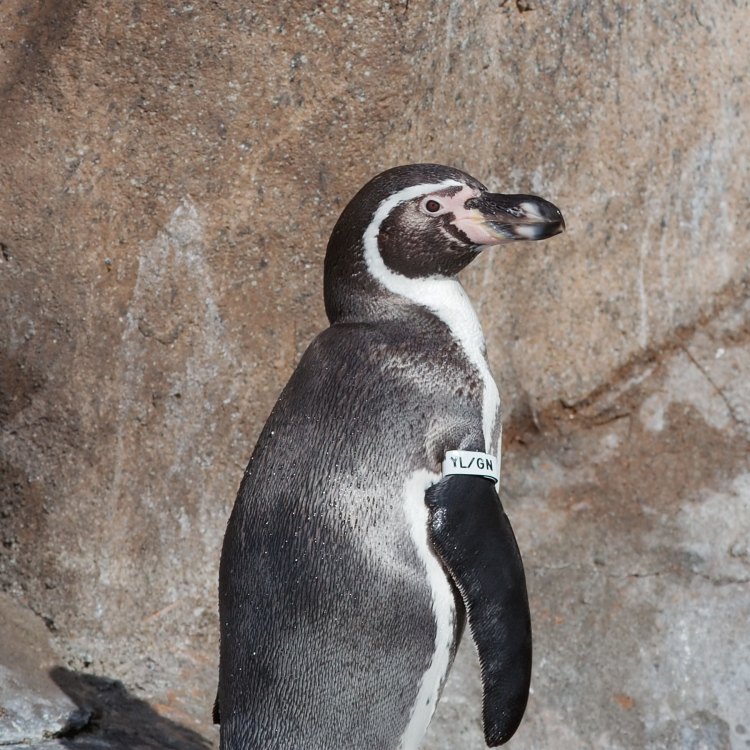
Spheniscus humboldti: Exploring the Enchanting Habits of the Humboldt Penguin
Disclaimer: The content provided is for informational purposes only. We cannot guarantee the accuracy of the information on this page 100%. All information provided here may change without prior notice.

